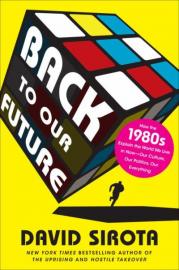By Robert Relihan, Senior Vice President
If you have conducted focus groups, or even observed them, you have probably noticed that the energy level can vary over the course of a day. I have always taken this as the normal course of events. But, it turns out there is a rather interesting explanation for this ebb and flow — decision fatigue. A recent article by John Tierney in the New York Times, “Do You Suffer From Decision Fatigue?,” describes the research surrounding this phenomenon in great detail.
I had always thought people simply get tired during the course of the day, but Tierney demonstrates that the mere act of making decisions wears us down, making us less able make additional choices. He points to a study in which individuals who simply review material were better able to make choices about it at the end than those who were forced to repeat incremental choices.
He also notes that those who receive food make better decisions. And, it is not the psychological reward of the food that works. Tasteless, but sugared grub will have more effect than a sugar-free sundae.
What is the impact of decision fatigued? One makes poor decisions, of course. But, what is a poor decision? The fatigued person defaults to the familiar, the usual, the expected. In other words, he or she avoids making the hard choices — just those choices we would like research participants to make.
So, what is the lesson here for researchers? Well, I am going to take the cans of Pepsi and cookies on the table much more seriously than I have in the past. I might even ban water and diet beverages. On a more fundamental level, it has caused me to re-think the number and nature of exercises I ask people to perform in a focus group. Let them create a collage at home rather than force them to select pictures for a collage during the interview. Might there be implications for questionnaire design?
Concerns about decision fatigue also make on-line qualitative and MROCs look all the more promising. Participants can respond to our tasks at the times they are freshest and best able to evaluate whatever it is we wish them to judge.
There is another troubling issue Tierney raises. “Decision fatigue is a major — and hitherto ignored — factor in trapping people in poverty. Because their financial situation forces them to make so many trade-offs, they have less willpower to devote to school, work and other activities that might get them into the middle class…. A trip to the supermarket induces more decision fatigue in the poor than in the rich — because each purchase requires more mental trade-offs.” At first this seems like an important, but a political concern. Yet, it has implications for those who wish to understand the behavior of consumers.
Dan Peck’ Atlantic article, “Can the Middle Class be Saved?” described what he calls the “hollowing out” of the American middle class. His economic arguments are familiar. Over the past several decades, a larger proportion of the nation’s wealth has accrued to a smaller proportion of individuals at the top. But, in the process, the middle class has fractured. Now, the non-professional middle class are more likely to resemble in behavior and attitudes the “high school drop-out poor” than the “college educated members” of the middle class.
The sub-text — many more of those whom we survey or wish to have in our MROCs and focus groups are likely to be in a semi-permanent state of decision fatigue. Our methods and approaches will need to be much more sensitive to this fact.


 —resulting in more meaningful journeys, with more individuals coming together to form fully committed, vibrant communities that are brimming with insights and co-creation, with depth beyond anything most capture from a traditional focus group. At times it can feel like stepping into the land of OZ and emerging with the key to the city.
—resulting in more meaningful journeys, with more individuals coming together to form fully committed, vibrant communities that are brimming with insights and co-creation, with depth beyond anything most capture from a traditional focus group. At times it can feel like stepping into the land of OZ and emerging with the key to the city.









